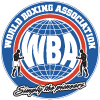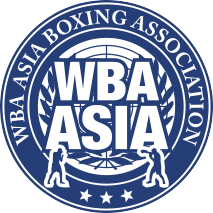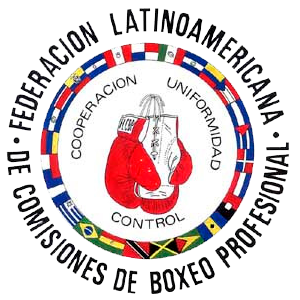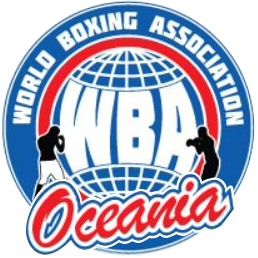It was the first of the three great battles that bound them in a ring of no more than 4.90 by 6.90 meters by its 4 sides and 0.91 mts. minimum or a maximum of 1.22 mts. of the ground.
On Wednesday, March 8, 2023, it will be the 52nd anniversary of the epic war of socio-political projections that took place at Madison Square Garden in New York, the old mecca of the sport, between two true boxing giants, the originally named Cassius Clay, later Muhammad Ali, a.k.a. The Greatest, and his archrival, Joe “Smokin” Frazier or “Smokin” Joe, in the opposite corner, who were undoubtedly two of the greatest fighters in the history of the sport that was born 7,000 years ago, possibly in Abyssinia, an African empire that stretched between what are now Ethiopia and Eritrea.
Those who watched it on the site, and the millions who have seen it on video, are unanimous in asserting that there never was and never will be a bigger, more memorable and more interesting fight in history (perhaps only similar to Ali vs. George Foreman on October 30, 1974, won by KOT8 by the Muslim), called the Real Fight of the 20th Century between the “The Louisville Lip” Muhammad Ali, who moved endlessly with his arms outstretched to one side of his body, and the puncher “Smokin” Joe, lord of the left hook, both undefeated, both were best heavyweights of the era, both irreconcilable enemies inside and outside the ring, both Olympic champions in the amateur, the first in Rome-60, the other in Tokyo-64.
A war rather than a fight
Beyond the sporting aspect, the bout was a social-political war. On one side were the supporters of Joe Frazier, the “good nigger”, the docile man, respectful of the establishment, fan of the homeland, supported by a portion of his race brothers and by the conservative whites, today called supremacists and sarcastically treated by his future rival Uncle Tom and gorilla (he showed up at the press conferences with a toy gorilla), among other taunts.
On the side of the challenger was the majority of his skinned peers and the young anti-war white men, in solidarity with him because of his steadfast refusal to fight in Vietnam and because he was seen, and indeed he was, as a challenger of the established order after his conversion to Islam in April 67, which left him without crowns and in danger of going to prison, from which he escaped thanks to the skill of his lawyers. Professor Amira Rose Davis of Pennsylvania State University summed up the position of his struggle for civil and race rights in a brief sentence: “He (Ali) was vilified for being outspoken, vilified for his opposition to the war and vilified for his connections to the Islamic Nation,” Davis said, adding that “Frazier came to symbolize a more complacent and conservative kind of America. For his part, boxing historian Mike Silver indicated that “the fight was not just a prize fight. It had other dimensions; the dimensions of race, politics, the Vietnam War.”
That tense atmosphere, of a divided country, more racial and political than sporting, was prevailing when the two men stepped into the MSG ring and it was the atmosphere during the 15 rounds, with both sides in permanent and heated arguments and cheers from one side or the other depending on what happened on the ring.
Naturally, it should also be noted that this luminous night of Monday, March 8, was even more dazzling with the presence of dozens of celebrities from the show business, cinema, radio, theater, television, finance, politics… Everyone with a minimum of notoriety wanted to be there, because whoever was not there could later be considered a nobody.
Thus, along with the almost 20,000 people who filled the MSG, there were ringside seats for the personalities of the moment, such as -to mention just a few of the many- Barbra Streissand, Bob Dylan, Diana Ross, Hugh Hefner, Woody Allen, Diane Keaton, Dusty Hoffman, Burt Lancaster, who acted as a never-to-be-silenced commentator for a TV channel alongside Howard Cosell; the renowned writer Norman Mailer, who wrote a chronicle of the fight; a very young lawyer Bob Arum, lawyer for the Kennedys, later a famous promoter who years later would promoted some 12-16 Ali fights, as well as, impossible not to mention, a very special figure who attracted the collective attention, the actor and singer Frank Sinatra, The Voice, hired by Life magazine as a photographer, a role he fulfilled discreetly as far as the quality of his graphics was concerned.
Ali returned from banishment.
In November of the previous year Ali had returned to boxing and to recover his faintly faded fame as a gladiator. He was back after an enforced absence since 1967, the year he lost the belts of The Ring magazine, the World Boxing Association and the World Boxing Council -now in the hands of Frazier-, for having refused to go to fight in Vietnam. He had won the championship for the first time on 2/25/64, at the age of 22, by KOT in the 6th against Sonny Liston, with 8 successful defenses and in was his prime. When he came back after a tough legal battle, he defeated Jerry Quarry in three rounds on October 26, 1970 and on points to the Argentine Oscar “Ringo” Bonavena on December 7 of that year.
On March 8, Ali, 1.91 meters tall, 10 centimeters taller than his opponent, came up with 212 pounds (96.166 kilos), red trunks and a record of 31 victories, 26 by KO, 29 years and 2 months old to clash with Frazier, 205, 5 pounds (93.213 kilos), dressed in green and gold, 27 years, 2 months, and record of 26-0-0, 23 knockouts, to defend his WBA and WBC belts that had belonged to ALI and that he obtained against Jimmy Ellis in February ’70.
When the opening bell of the fight rang, it is estimated that at least 300 million people were in movie theaters or in front of their TV sets and watched Ali dominate the first 2 rounds before being rocked, and nearly dropped, in the third round by one of Frazier’s devastating left hooks.
The following rounds were a succession of grained fire, with the champion in slight advantage. Ali at times retreated to evade the heavy blows of his opponent, who was relentless in his attacks. In the final round, the 15th, Frazier caught the challenger with his lethal southpaw cross and Ali collapsed. Although he got up precariously within 8 seconds of the count, all had been decided.
Under the round-by-round scoring system the Smokin took the unanimous decision: famed referee Arthur Mercante let 8-6-1 rounds by JF, and judges Artie Aidala and Bill Retch voted 9-6 and 11-4, respectively. It should be added that the two fighters went to such great lengths in pursuit of victory that both went to the hospital for a couple of weeks, highly compensated for the incident with a purse, unthinkable at the time, of $2.5 million each, paid by promoters Jerry Perenchio and Jack Kent Coope, the latter then owner of the Los Angeles Lakers professional basketball team. Both earned more than $11 million in ticket sales and broadcast in theaters, closed and open circuit in 370 sites in the U.S. as well as in Africa, Asia and Europe. Global grosses were estimated at more than $45 million.
Shortly thereafter, at a lunch with Frazier, veteran boxing columnist Jerry Izemberg said that in the restaurant, a little boy approached them to tell the champion that his dad had said at home that Ali “fought on drugs. Frazier hugged the little boy and said yes, tell him (the boy) to tell his dad that “It’s true. He fought drugged; He was drugged with 3 left hooks.”
Three years later Ali and Frazier met for the second time, exactly on January 28, 1974 and the former took revenge in a non-title fight by unanimous decision at the same Madison and in a third fight Ali again finished with his arm raised at the Araneta Coliseum in Quezon City, Metro Manila, Philippines, when his opponent could not come to the call of the bell for the 15th final round, surrendered by the hard scuffle and the 40 degrees Celsius temperature. A couple of seconds later Ali collapsed in his corner. He said afterwards that “I’ve never been so close to death.”
Ali, the only one to have held the heavyweight title three times (1964-74-78) left the ring, honored by his colossal fame as a fighter (never equaled, in spite of the time that had passed) as well as an ardent fighter for his race and his religion, which he did after 21 years in the ring (1960 to 81). He went 56-5-0, 37 knockouts for, one against and died in Scottsdale, Arizona, at age 74 from respiratory complications aggravated by Parkinson’s diagnosed in 1984. Frazier fought from 1965-81 and left a record of 32 (27)-4 (3 KO)-1. Born in a South Carolina town, he died of liver cancer on November 7, 2011 at the age of 67 in his adopted hometown of Philadelphia, Pennsylvania. He never forgave Ali’s humiliating offenses.

















